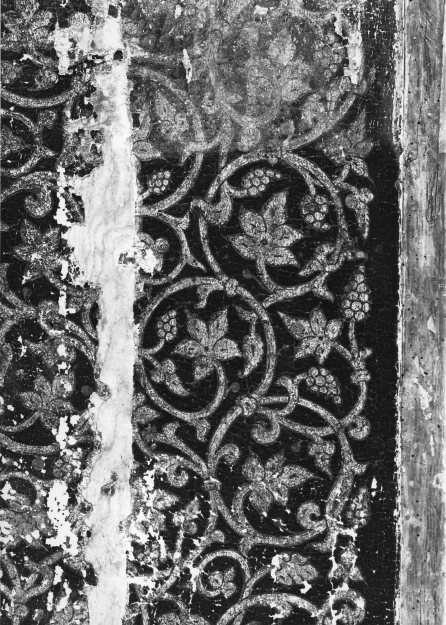This is a photograph of the upper part of the mihrab of the Great Mosque of Kairouan, a World Heritage site since 1988. It is a close-up of the half-dome, which is made of curved wood covered with thick plaster and painted with a complex vegetal motif - a common theme in Islamic art and architecture. The image was taken in 1973 by Franco Rigamonti and is part of a series of photographs documenting the restoration work carried out on the mihrab in the 1970s. Since 1962, ICCROM has carried out technical and advisory missions to Tunisia to train specialized staff and advise on the conservation of monuments, museums, historic city centres (medinas) and archaeological sites. ICCROM also facilitated the creation of conservation centres and laboratories throughout Tunisia, such as a National Laboratory in Carthage.
ICCROM was invited to assess the condition of the Kairouan Great Mosque several times from the 1960s to the 1980s. We were consulted on conservation methods for its mural paintings and the mihrab, as well as for the restoration of the Kairouan wooden sarcophagus dated from the Punic period.
We also assessed the condition of the Sfax Great Mosque in the historic city of Sfax, Tunisia, where humidity problems, reinforcement of old marble decorations and stone deterioration were examined. In addition, ICCROM was involved in architectural and urban studies for the protection and enhancement of the historic towns of Sfax and Testour in 1969 and 1970.
All these activities are documented through correspondence, reports, photographs, architectural drawings and heritage samples available in the ICCROM Archives.
The samples, which come from the Kairouan Great Mosque and Aghlabid Basins of Kairouan, are available to view online in the Mora samples collection online catalogue.

